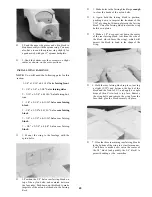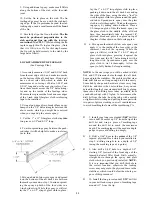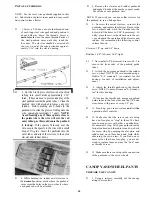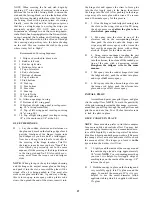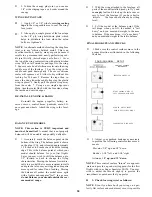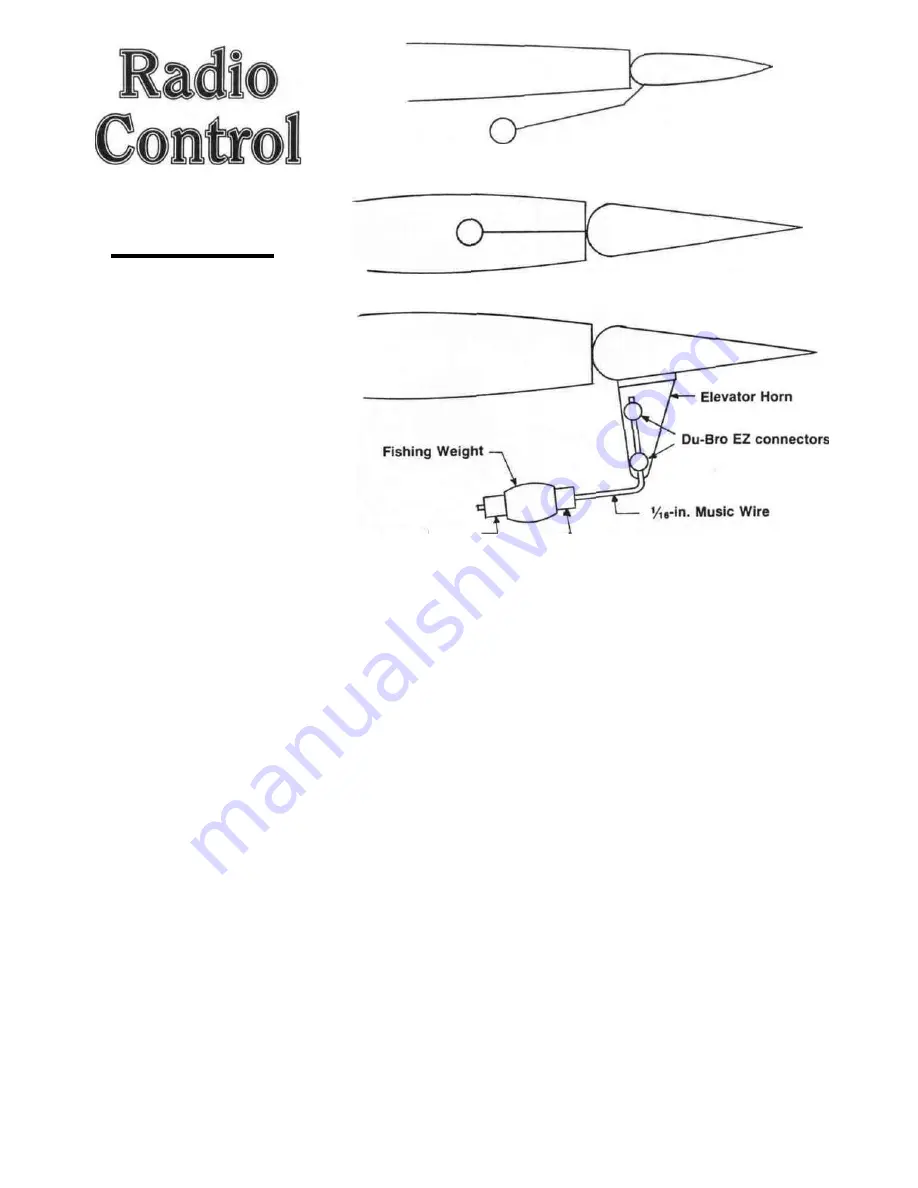
Figure 1. Balancing a control surface eliminates flutter. Putting the mechanism outside is
easiest, but there are drawbacks: not very pretty, and the hardware can catch on things.
Sport and
Aerobatics
Ron Van Putte
111 Sleepy Oaks Rd.
Ft. Walton Beach, FL 32548
PERIODICALLY I read in aircraft design arti-
cles about how to "prevent" control surface
flutter In most cases the suggestions are good
ideas to use in delaying the onset of the
phenomenon, but few actually work in prevent-
ing flutter
Before I get into the subject further, there are a
few things which need to be clarified First, in
the classical sense, what modelers usually call
control surface flutter isn't flutter at all but con-
trol surface buzz Flutter engineers reserve the
word "flutter" to describe oscillatory, self-
sustaining motion of aircraft components which
involves the interaction of two or more modes of
component motion Control surface buzz in-
volves only one mode of aircraft component
motion Big deal, right
9
To a f l u t t e r engineer the d i s t i n c t i o n is
important, because it describes a completely dif-
ferent mechanism of interactions To modelers
the distinction is usually not important because
we seldom observe classical flutter
Flutter is inherently destructive At the flutter
speed, aircraft components bend and/or twist in
sustained oscillations whose amplitudes neither
decrease or increase However, once the flutter
speed is exceeded, the oscillations grow in ampli-
tude until something breaks or otherwise changes
the relationships among the affected aircraft
components (Many modern fighters must be
loaded with external stores very carefully be-
Figure 2. Another way to mass-balance a control surface. Neat, but hard to make.
Vie-in. Wheel Collars —J——————
l
Figure 3. Bowing to the inevitable—do it the easiest way. Here's a suggested set of common
materials to use for a neat, functional job of statically balancing a control surface.
trol surface buzz, I'm going to turn around and
call it control surface flutter anyway, because
that's what most of us call it This kind of motion
involves only oscillatory rotation of the aileron or
elevator It is caused by the way we hinge them
and the way we move them
Since they are hinged at the front, the center of
mass of the surface is behind the hinge point
They are often moved via a torque rod which en-
ters the inboard end of the surface It is the com-
bination of these two design features which pro-
duces control surface flutter, and once you have
them, there is a speed at which you will have
make the control surface torque rod suffer This
causes the natural frequency of aileron rotation to
increase, which causes flutter to occur at a higher
airspeed
However, suppose you try both these tech-
niques, and you still have flutter Is there any-
thing else which can be done
9
Yes, there are a
few possible correctives, like removing the con-
trol surface and replacing it with one that is thick-
er at the leading edge than the trailing edge of the
wing or horizontal tail it is attached to You can
also make the trailing edge of the control surface
more blunt Both of these fixes also tend to in-
Back In his February 1988 column, author Van Putte suggested that one way to get differential aileron travel was to bend the aileron horn
forward. Some people felt that this would do no good, so Ron drew this sketch to prove his point. The radiuses to the arc (R) represent the
control horn position as the servo (L) gives equal Up and Down inputs. There is a noticeable difference in control horn travel between the Neu-
tral position and Up compared to the travel from Neutral to Down. (This sketch illustrates the aileron horn on a low-wing airplane.)
Neutral Down
cause their thin, flexible wings are potential flut-
ter victims )
I have observed only one case of model flutter
It happened to me on an early version of the Sen-
ior Falcon The original wing design was much
less rigid in both bending and torsion than the
present wing, and my aircraft went into a classi-
cal case of wing bending/torsion flutter at the bot-
tom of a near-vertical dive The right wing sepa-
rated from the aircraft about where the wing
sheeting ended Senior Falcons don't fly too well
with little more than half a wing
Now, having pointed out that control surface
flutter isn't really flutter at all but is actually con-
50 Model Aviation
flutter If you're lucky, the flutter speed is faster
than the airplane is capable of achieving In that
case, you'll never have flutter, and this is why
some of the techniques to "prevent" flutter are
successful
The two most common flutter-prevention tech-
niques work on opposite ends of the problem.
The easiest to implement is sealing the gap be-
tween the control surface and the wing or horizon-
tal stabilizer This attacks the aerodynamic driver
of the flutter problem and will cause flutter to oc-
cur at a higher airspeed. The second fix is to
43

